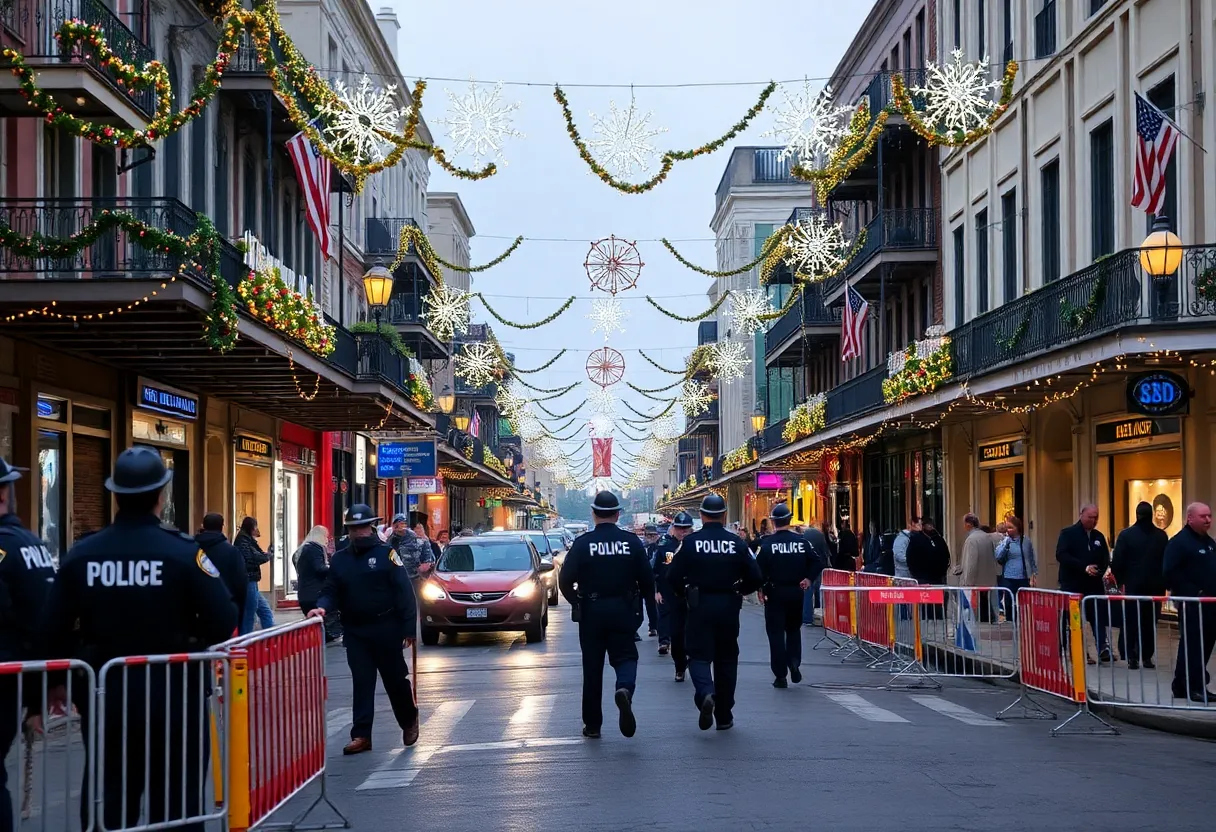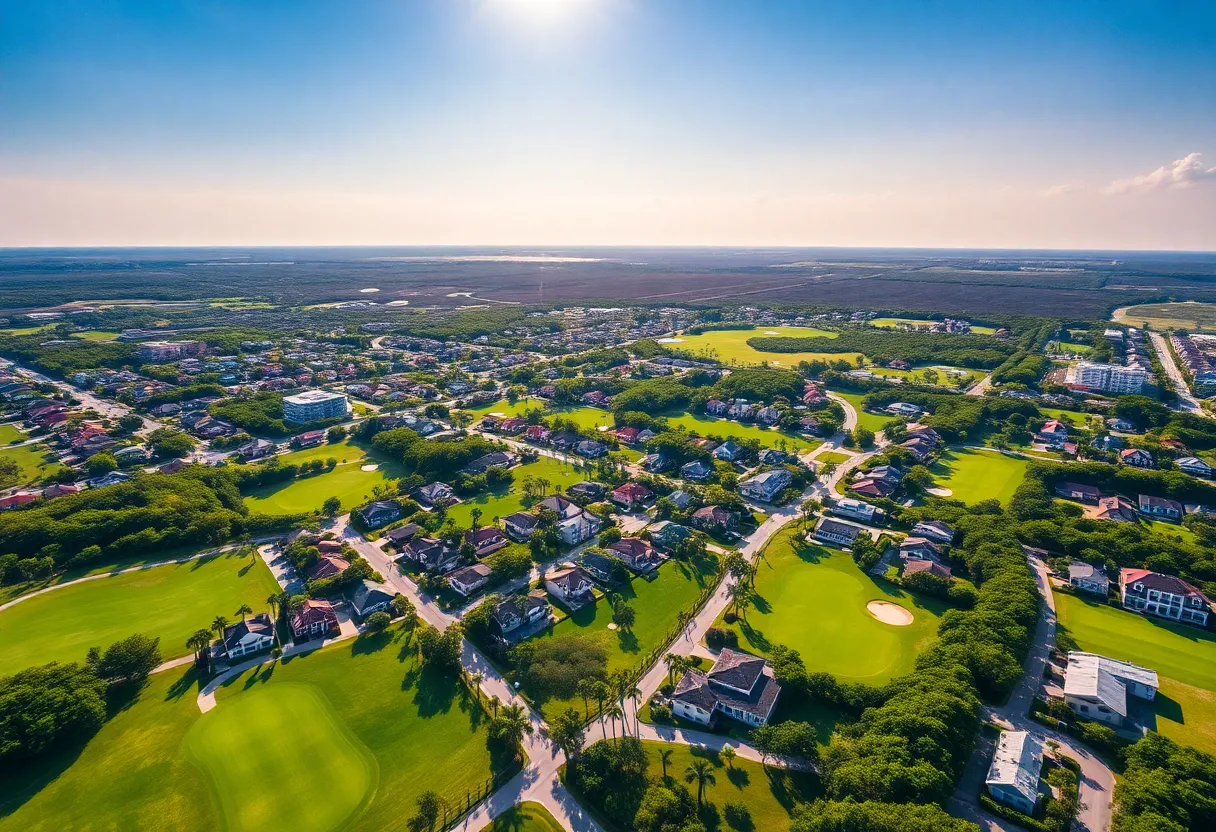News Summary
On New Year’s Day, New Orleans faced a tragic vehicle attack in the French Quarter, resulting in the death of at least 15 individuals and numerous injuries. The attack occurred amid the ongoing bollard replacement project aimed at enhancing pedestrian safety. Despite increased police presence, the assailant circumvented existing barriers. As the community mourns, officials are urged to reassess safety measures as they prepare for significant events like the Super Bowl.
Tragedy Strikes New Orleans on New Year’s Day
In a heartbreaking turn of events, the joyful celebrations of New Year’s Day in New Orleans were marred by a tragic vehicle attack that claimed the lives of at least 15 individuals and left many more injured. This shocking incident took place in the bustling French Quarter, an area known for its lively atmosphere and pedestrian-friendly streets.
Bollard Replacement Project Creates Vulnerability
Just a little over seven years ago, the city of New Orleans began a project to enhance safety in pedestrian-heavy areas by installing adjustable barriers called bollards at various intersections in the French Quarter. These robust structures were designed specifically to prevent vehicles from accessing crowded spaces during events and festivities. However, the replacement of these crucial safety measures was still underway when the tragic incident occurred.
The bollard replacement project started on November 18 and focused on approximately eight blocks of Bourbon Street, stretching from St. Ann Street to Canal Street. Unfortunately, this critical safety project created temporary gaps in protection. The old steel columns were taken out to make way for new ones, leaving behind temporary asphalt patches and making it easier for vehicles to enter pedestrian areas.
Security Measures In Place But Ineffective
City officials have not confirmed whether the intersection where the attack happened was undergoing active construction at the time. Alarmingly, a confidential report from 2019 warned that the bollards intended to block vehicles “did not appear to work” properly and called for immediate repairs. Despite a sizable police presence for the New Year’s Eve festivities—300 additional officers were deployed—this oversight proved costly.
While local authorities had placed police vehicles to help block access to pedestrian areas, the assailant found a way to maneuver around them and onto the sidewalk. The suspect, a veteran and Texas resident, was ultimately shot and killed by police on the scene.
The Growing Threat of Vehicular Attacks
Vehicular attacks are a rising concern globally, with experts highlighting that even the best-laid security measures can’t fully deter a determined assailant. In the face of escalating threats, law enforcement had set up around 400 officers and barricades throughout the city to ensure public safety during the celebrations, yet it wasn’t enough to prevent this tragedy.
Future Safety Measures Under Review
In the aftermath of this devastating event, city officials, alongside state leaders, have recognized the importance of revisiting the bollard situation immediately, especially with significant events like the Super Bowl approaching. There is a shared understanding that the safety of residents and visitors must be a top priority.
The bollard systems were part of a $40 million safety plan initiated back in December 2017, aimed at bolstering security in densely populated areas. Initially, the setup consisted of four sets of barriers at intersections, with an inner column design allowing temporary vehicle access when needed. The increasing frequency of high-profile vehicular attacks worldwide underscores the urgency in implementing effective safety measures.
Community Reeling, But Together
As residents and visitors process the shock and sadness from this traumatic event, the spirit of New Orleans remains resilient. There is hope that lessons learned will pave the way for improvements in public safety measures and address potential vulnerabilities in urban settings. The community stands united as they grieve and move forward, determined to ensure such a tragedy doesn’t repeat itself.
In this tight-knit city, where festivities bring people together, the need for vigilance and precaution has never been clearer. Planning for safety is now more crucial than ever as New Orleans prepares for its next big events, always keeping one eye on the past and the other on the future.
Deeper Dive: News & Info About This Topic
- Fox 8 Live: Bourbon Street Bollards Replacement
- The New York Times: New Orleans Security Truck Attack
- BBC: New Orleans Attack
- Washington Post: Bollards and Security in New Orleans
- NewsNation: Bollards in New Orleans Attack
- Wikipedia: Vehicular Attack
- Google Search: New Orleans Bollard Attack
- Google Scholar: New Orleans Vehicle Attack
- Encyclopedia Britannica: Terrorism
- Google News: New Orleans Attack

Author: STAFF HERE ORLANDO WRITER
ORLANDO STAFF WRITER The ORLANDO STAFF WRITER represents the experienced team at HEREOrlando.com, your go-to source for actionable local news and information in Orlando, Orange County, and beyond. Specializing in "news you can use," we cover essential topics like product reviews for personal and business needs, local business directories, politics, real estate trends, neighborhood insights, and state news affecting the area—with deep expertise drawn from years of dedicated reporting and strong community input, including local press releases and business updates. We deliver top reporting on high-value events such as Orlando International Fringe Theatre Festival, Megacon Orlando, and Central Florida Fair. Our coverage extends to key organizations like the Orlando Economic Partnership and Hispanic Chamber of Commerce Metro Orlando, plus leading businesses in leisure and hospitality that power the local economy such as Walt Disney World Resort, AdventHealth, and Universal Orlando. As part of the broader HERE network, including HEREJacksonville.com, HEREPetersburg.com, HERETallahassee.com, and HERETampa.com, we provide comprehensive, credible insights into Florida's dynamic landscape.




